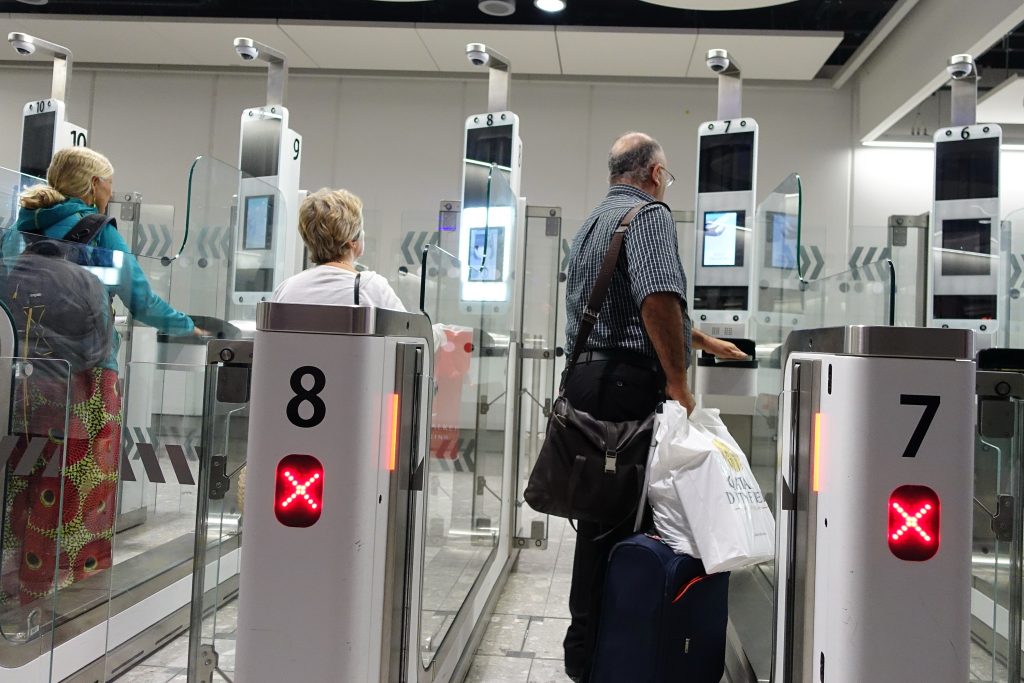Why a Reset is Coming – and What It Means for All of Us

For decades, travelling to Europe from the UK was as easy as hopping on a ferry or flight, passport in hand, and sailing through border control with a friendly nod. Those days, though, are rapidly drawing to a close. What’s coming isn’t just a tweak—it’s a full-scale reset. And we all need to be paying attention.
From October 2025, the European Union will introduce the Entry/Exit System (EES). It’s a technological step forward, but also a cultural and operational shift that redefines how UK citizens, and other non-EU travellers, will enter Europe. This isn’t just about queue times—it’s about data, security, sovereignty, and the evolving expectations of the modern traveller.
As someone who has spent over four decades in the travel industry—on the ground, behind the boardroom table, and leading businesses—I’ve seen monumental change. But this one is different. It’s systemic. And it’s long overdue.
What Is the EES, and Why Now?
In simple terms, the EES will automate the recording of non-EU travellers when they enter and leave the Schengen Area. No more ink stamps in your passport. Instead, your biometric data—fingerprints and facial scans—will be stored alongside your travel details in a central system.
Let’s be honest, stamping passports in 2025 is a bit like using dial-up internet to run a booking engine—it’s outdated. Europe is catching up with systems already in place elsewhere, and while some see it as invasive, others see it as a smart move to manage movement efficiently in a world that is both globally connected and security-conscious.
But, make no mistake, this will not be a seamless transition. Anyone who’s worked in airports, operated tour logistics, or dealt with the nuances of government-led tech projects knows these systems rarely come without teething issues.
For the Traveller – Prepare for a Wake-Up Call
Imagine a family heading to Spain for their half-term break. They arrive in Malaga, only to be met with long queues at immigration because the system needs to verify their biometrics, match the passport to the face, and confirm their “short stay” status. The magic 90 days in 180 limit—already confusing for many—will now be enforced automatically. Overstaying even by accident? The system will flag it.
And let’s talk about those biometric scanners. They’re not universally installed yet. Many airports and ferry terminals across Europe are still unprepared for this scale of data processing. That means early chaos is likely—and that’s being polite.
This is where the travel trade needs to step up. Agents, operators, and platforms must educate their customers—not just about where to go and what to pack—but about how they’ll be processed at the border. Failing to do this will damage trust and brand loyalty. For those of us running travel businesses, this is about being proactive, not reactive.
For the Industry – A Critical Juncture
The introduction of the EES comes at a delicate time. Travel is rebounding post-pandemic. Confidence is returning. Airlines are expanding routes. Hotel occupancies are up. But systems like this, if poorly implemented or misunderstood, could erode progress.
There is also a financial reality: this system requires significant investment from transport operators, border facilities, and national governments. That infrastructure is not yet fully in place. The UK government, no longer part of the EU, has limited say but will have to support its ports and airports in adapting. Eurostar, Channel Tunnel, and ferry terminals all face serious logistics challenges. How do you efficiently process biometrics at a train station built in the 1990s?
And let’s not ignore the staffing issues. Border control is already stretched thin in many countries. Add tech into the mix and you need trained personnel and fallback plans. If the machine fails, what then?
This is where the true test lies—not in the theory, but in the delivery.
A Chance to Reset – If We’re Bold Enough
Despite the potential disruptions, there’s also an opportunity here. If we think bigger, the EES could act as a catalyst for more intelligent, secure, and tailored travel across the continent.
Imagine seamless movement across borders where your preferences, travel history, and even loyalty status could be securely integrated. Imagine a future where border crossings aren’t just about policing movement, but enhancing the experience. It’s all possible—if we prioritise data privacy and put the traveller, not just the bureaucracy, at the heart of the system.
From a business standpoint, those of us who build experiences for clients must adapt. At PURE ONE, I’m already looking at how we educate our travellers on these new systems and build pre-travel support that simplifies the process. This is about foresight. This is about being more than just a booking service—it’s about being a true travel partner.
Final Thoughts…
We are entering a new era. The nostalgia of the past—easy movement, trust-based borders—is fading. What replaces it must be better, smarter, and more respectful of travellers’ time and dignity. But one thing remains unchanged: travel will always be about connection—across cultures, languages, landscapes, and lives. As systems evolve, let’s make sure that humanity remains at the centre.





